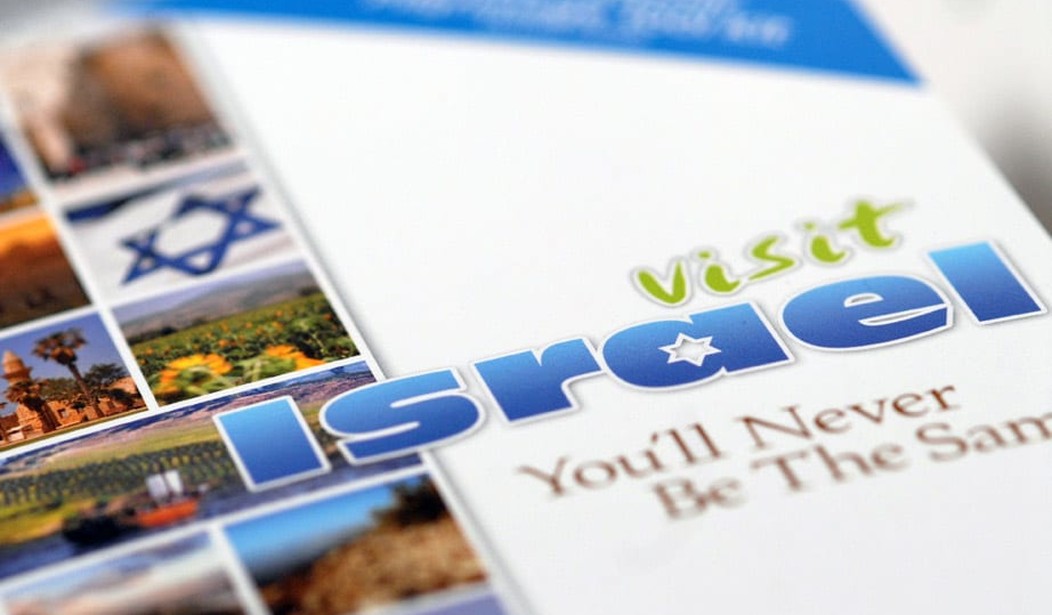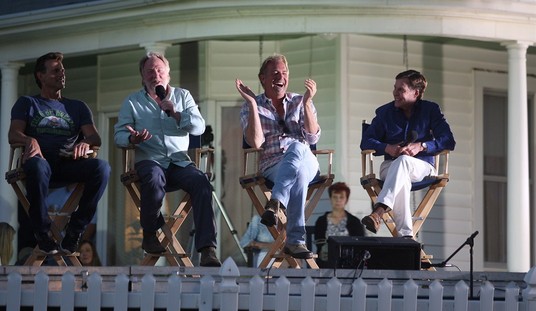The Reform Movement has just declared jihad on the Israeli ministry of tourism, per a Jerusalem Post report. But this is actually much less of an issue than it seems; lots of background is in order.
The State of Israel was founded by Jewish nationalists — adherents of one or another version of the Zionist movement — on the basis of an original mandate from the League of Nations, honored by the successor United Nations organization, to create a “national home” for the Jewish people. The crux of the matter is a pair of simple questions:
What is a nation? And who is a member of the Jewish nation?
A “nation,” according to the American Heritage Dictionary of the English Language, is “a people, usually the inhabitants of a specific territory, who share common customs, origins, history and frequently language or related languages.” That will do as a starting point.
Traditional Jewish sources are precise concerning the birth of the nation of Israel (as differentiated from the state). The nation of Israel came into being at the foot of Mt. Sinai on Sivan 6, 2448, according to the traditional Jewish calendar. If one bears in mind that the present year is 5776 in that calendar, this makes the Jewish nation approximately 3,327.5 years old.
As anyone familiar with the Pentateuch will know, the people of Israel are descendants of the Patriarchs Abraham, Isaac, and Jacob (to use the English forms of their names).
So that takes care of the “people” in the definition and their common origins and history.
The nation was promised and given a specific territory by G-d, once called Canaan, henceforth known as Eretz Yisra’él. For the entire range of those three millennia plus, Israel’s intellectual and spiritual life and very often the nation’s day-to-day life has been conducted in the Hebrew language — which takes care of the common language. And the common customs are enshrined in the Torah, written and oral, Israel’s “constitution,” as it were, which was revealed to the entire nation assembled at the foot of Sinai.
To put it into the terms used by the great 19th century Rabbi Mé’ir Simcha ha-Kohen (a non-Zionist who spent his entire life in eastern Europe), Israel’s capital is Jerusalem, her language the Holy (Hebrew) Language, and her culture is the Torah (cf. Meshech Chochma, Parashath Bëchuqqothai). For the past two millennia, the Jewish people has languished in exile, with most of her members domiciled in foreign lands (but never all: from the time of the Return to Zion after the first exile, in Babylon — modern Iraq — there has never been a period of history in which there has not been some Jewish presence in the Holy Land). What has preserved our identity and national cohesion over that vast amount of time has been that common set of customs, common history, common language, and the yearning to return home to the common territory.
This is something which is understood implicitly by most Israelis. A demographic survey of the country’s Jewish population will show that roughly 30% of the approximately six million Jews resident in the country consider themselves to be formally religious; that is, they generally adhere to the strictures of Sabbath observance and the holidays, follow the dietary laws, generally engage in thrice-daily prayer, and so on. On the political spectrum, most of these people vote for parties with an overtly religious tinge, such as Yahaduth Hatorah, Shas, and Habayith Hayehudi. Some vote for Likud, and a few for other parties, including Labor — there really is no accounting for tastes.
Another 20-25% are quite militantly secular, shading into the anti-religious. These people generally vote for parties of the Left, such as Meretz and Hamachane Hatziyoni. This leaves us with the rest of the 50%, who generally describe themselves as “traditional.”
These form the bulwark of Likud, Kulanu, and quite a few of the voters for Yesh Atid and Yisra’él Béythénu (and not a few of those who traditionally vote for Labor). Traditional people are exactly as they sound: they are not fully observant, but whatever interface they do have with religion and religious customs — rites of passage, holidays, and so on — they want it to be with the authentic tradition.
Israelis are generally quite direct and straightforward in their speech and approach to matters, and native-born Israelis are famously known as tzabbarim — named for the sabra cactus; sweet on the inside, prickly on the outside. Few of them have any time for substitute nonsense.
The holiest place in the Holy Land to the Jewish people is the Temple Mount in Jerusalem, site of the First Temple built by Solomon and the Second built after the return to Zion under Zerubbavel ben She’alti’el (as related in the Book of Ezra). The great preponderance of rabbinic opinion does not permit Jews to ascend the Temple Mount at this time, for reasons which are beyond the scope of this article; it is only one of the indications that, despite the establishment of a state in the Holy Land, we remain in exile.
This makes the Kothel ha-Ma’aravi, the “Western Wall” which is all that remains of the wall which once surrounded the Temple precinct, a uniquely precious and holy place to Jews, one at which thousands of people come daily to pray, and have done so ever since the site was liberated in the Six Day War of 1967. The entire plaza has the status of a synagogue, and there is a rabbi who serves as the rabbi of the wall. Prayer at the Western Wall is therefore conducted according to time-honored Jewish tradition, enshrined in halacha — Jewish law — with separate accommodations made for men and women, in separate sections.
A bit over 200 years ago, there arose in western Europe under the influence of foreign ideologies a movement which sought to “reform” Judaism, to make it more acceptable to the predominantly Christian culture — a culture which had been unremittingly hostile to the Jewish people for centuries — and ease assimilation into those societies. Those Jews who remained true to the three-millennia long Torah tradition became known as “Orthodox” — from the Greek words for “straight teaching” — as opposed to the Reform.
This Reform Movement, having largely accomplished its purpose in the Diaspora, has sought to establish itself in the modern state of Israel, transplanted from the Diaspora. The movement’s adherents in Israel are very few in number, and are largely immigrants from the U.S. and elsewhere. Nobody prevents them from praying at the Western Wall, like everyone else: the men in the men’s section, and the women in the women’s section.
But they have tried to bully their way into gaining accommodation for what they term “pluralistic” or “egalitarian” services, and this has been resisted by the vast majority of Israelis who, as I’ve indicated, have some respect for the genuine traditions of their people. Lately, their cause has been taken up by the anti-religious Left in Israel — not because they have any real interest in the Reform, but because they see it as a wedge with which to weaken the religious establishment in general.
The Israeli minister of tourism, Yariv Levin of Likud, has been an outspoken critic and opponent of such things, knowing the attractive power of the holy site for Jews the world over when they come to Israel. So the Reform Movement, using the usual petty, bullying tactics of the Left, has decided to boycott the minister’s tour of the United States, trying to promote tourism in Israel.
The Left has taken up this cause, because they know now with demographic certainty that they are not the wave of the future.
Israeli demography professor Arnon Soffer of Haifa University noted this already in 2011, when he noted that (for example) in 2007, 110,000 Jewish babies had been born in Israel — and all but 18,000 of them were to religious families. Furthermore, the majority of new ‘olim — “immigrants” — to Israel from the Americas and Europe are religious people, and there is also an intense outreach effort among the “traditional” population intended to reacquaint those who are interested with their religious heritage.
As a result, says Sofer, by 2030 about 55% of Israelis will be members of the chareidi —“non-Zionist” religious communities — and another very large segment will belong to the “national religious” or “religious Zionist” public.
Hence, the cause for the Reform Movement’s unholy war against the religious establishment in Israel, seeking to establish themselves before they are completely irrelevant; and hence also why they are in fact irrelevant.









Join the conversation as a VIP Member